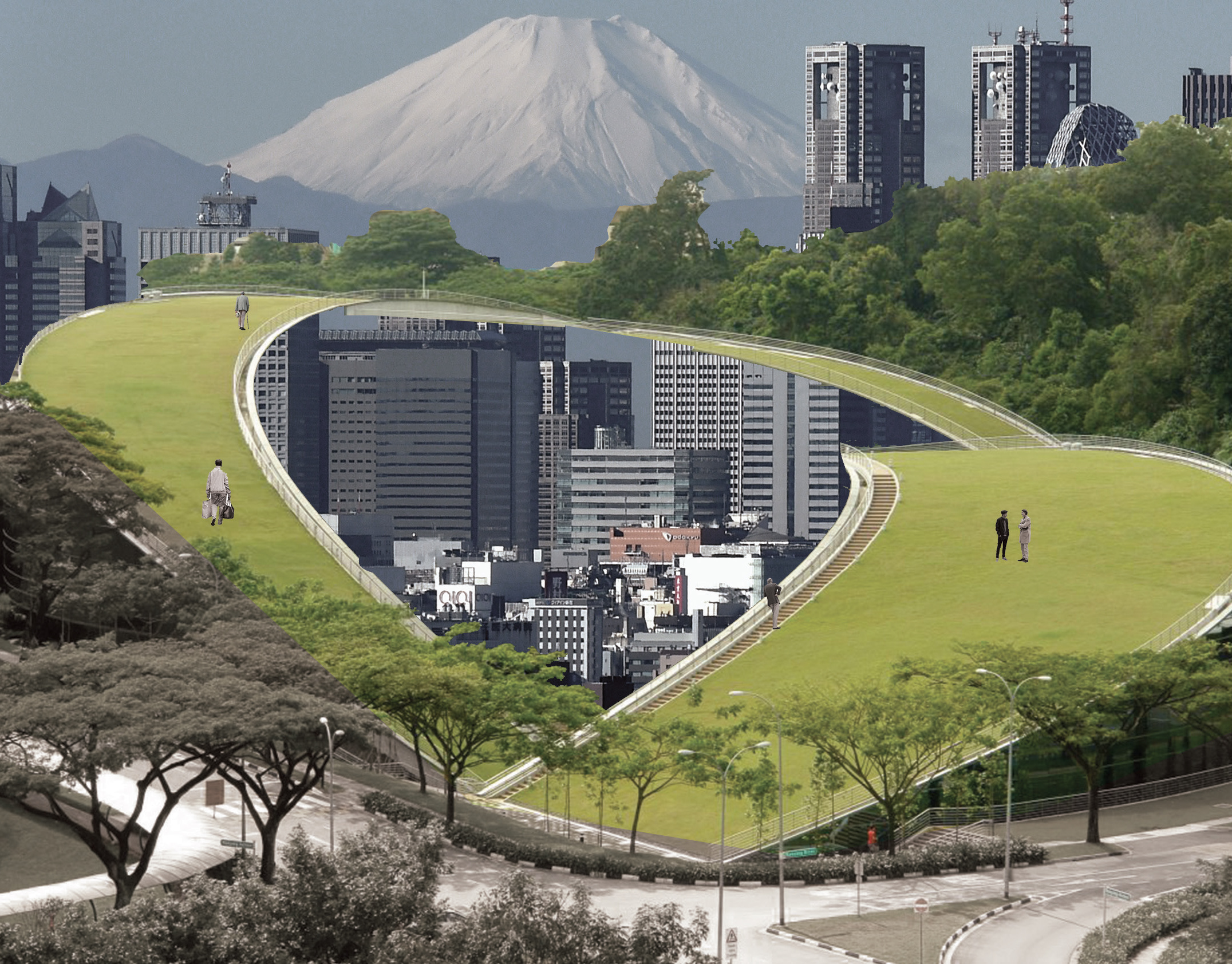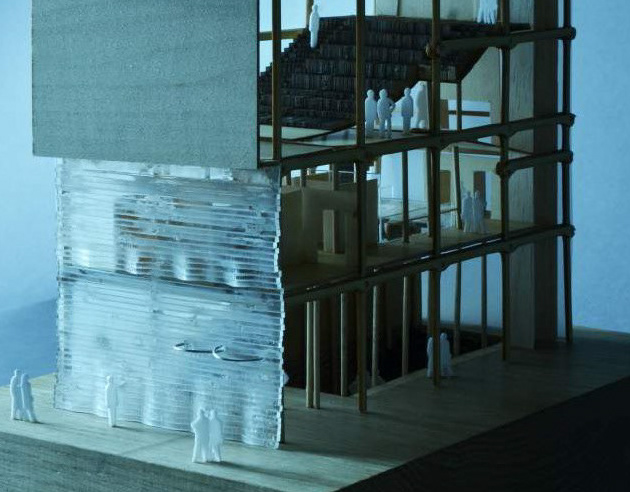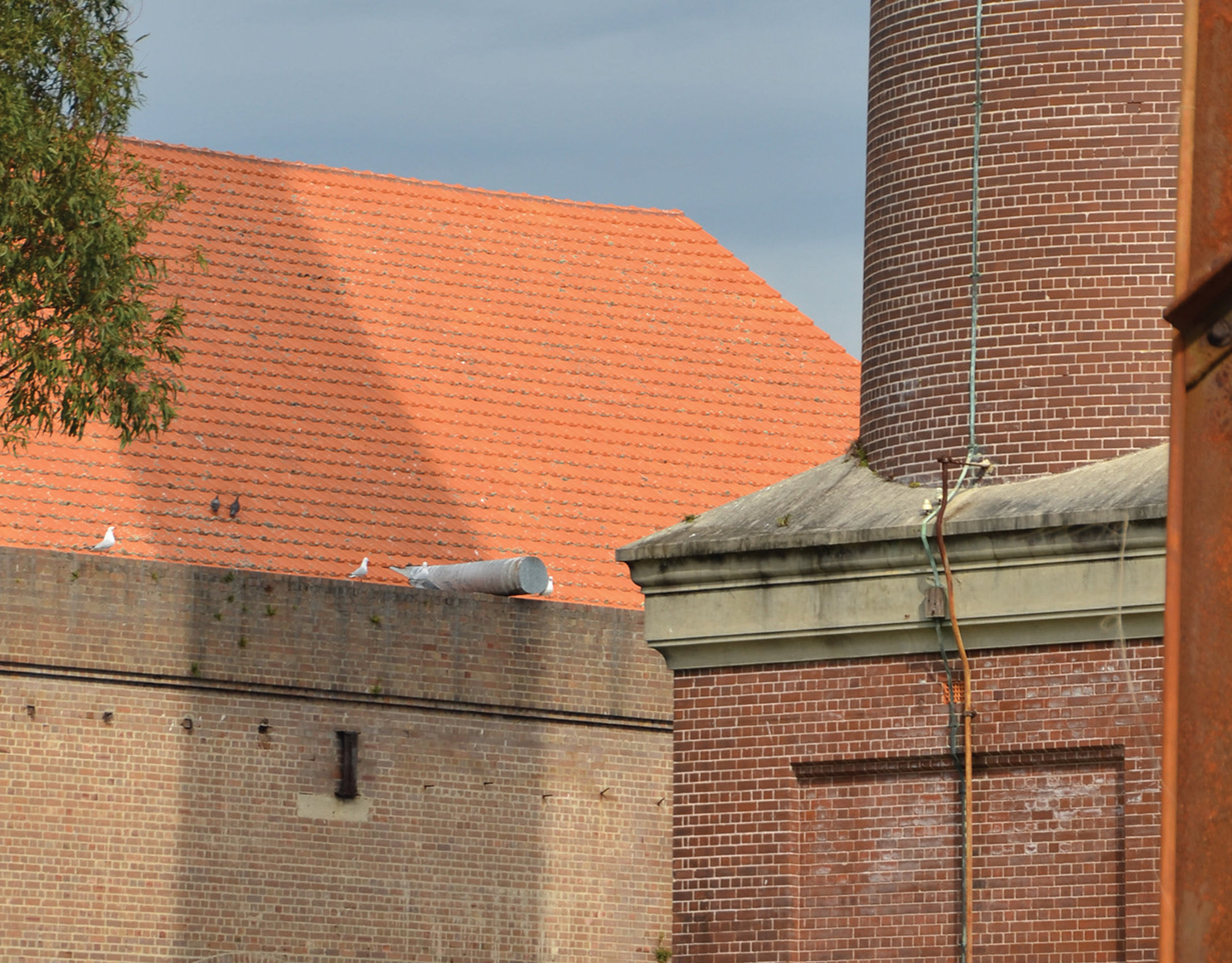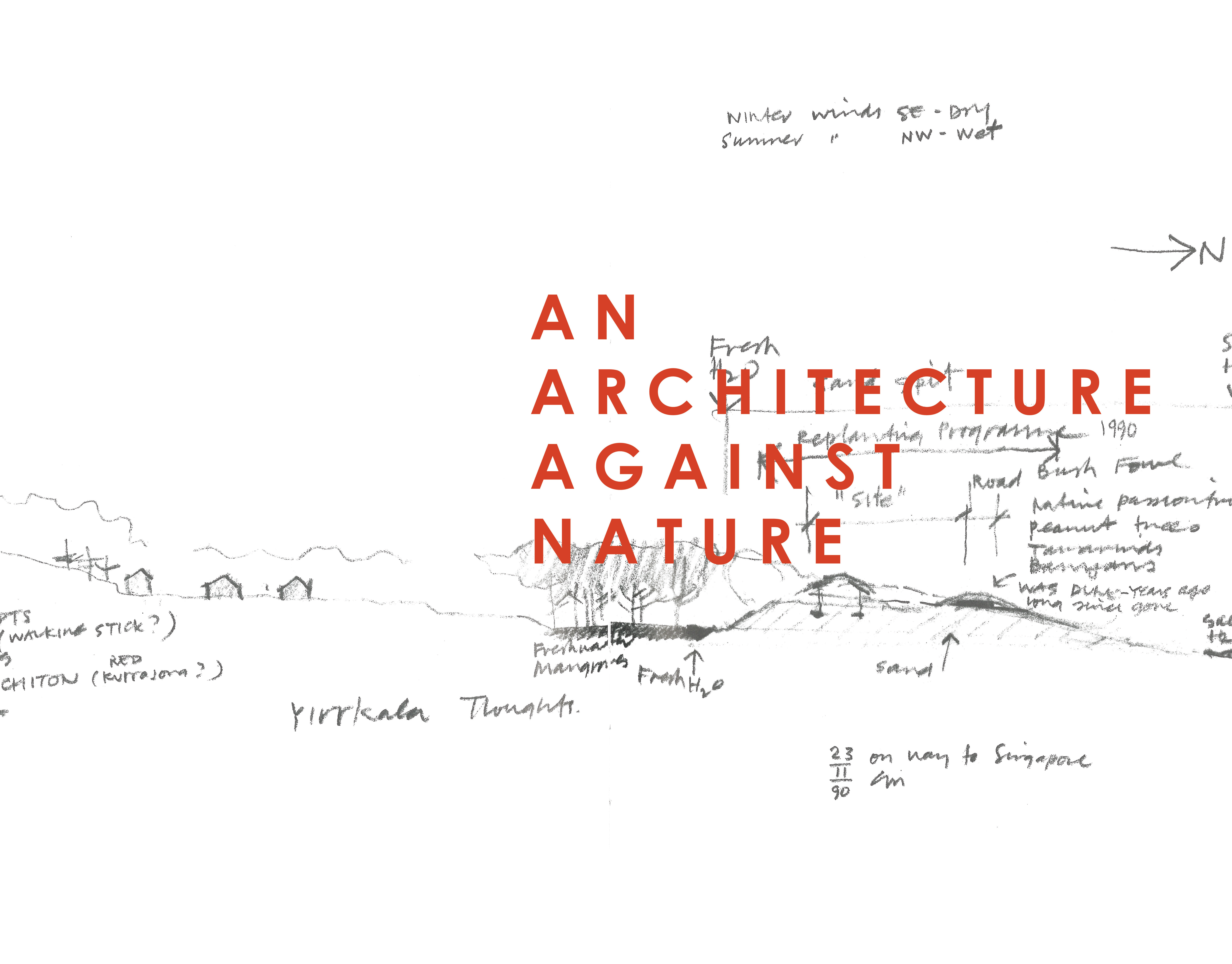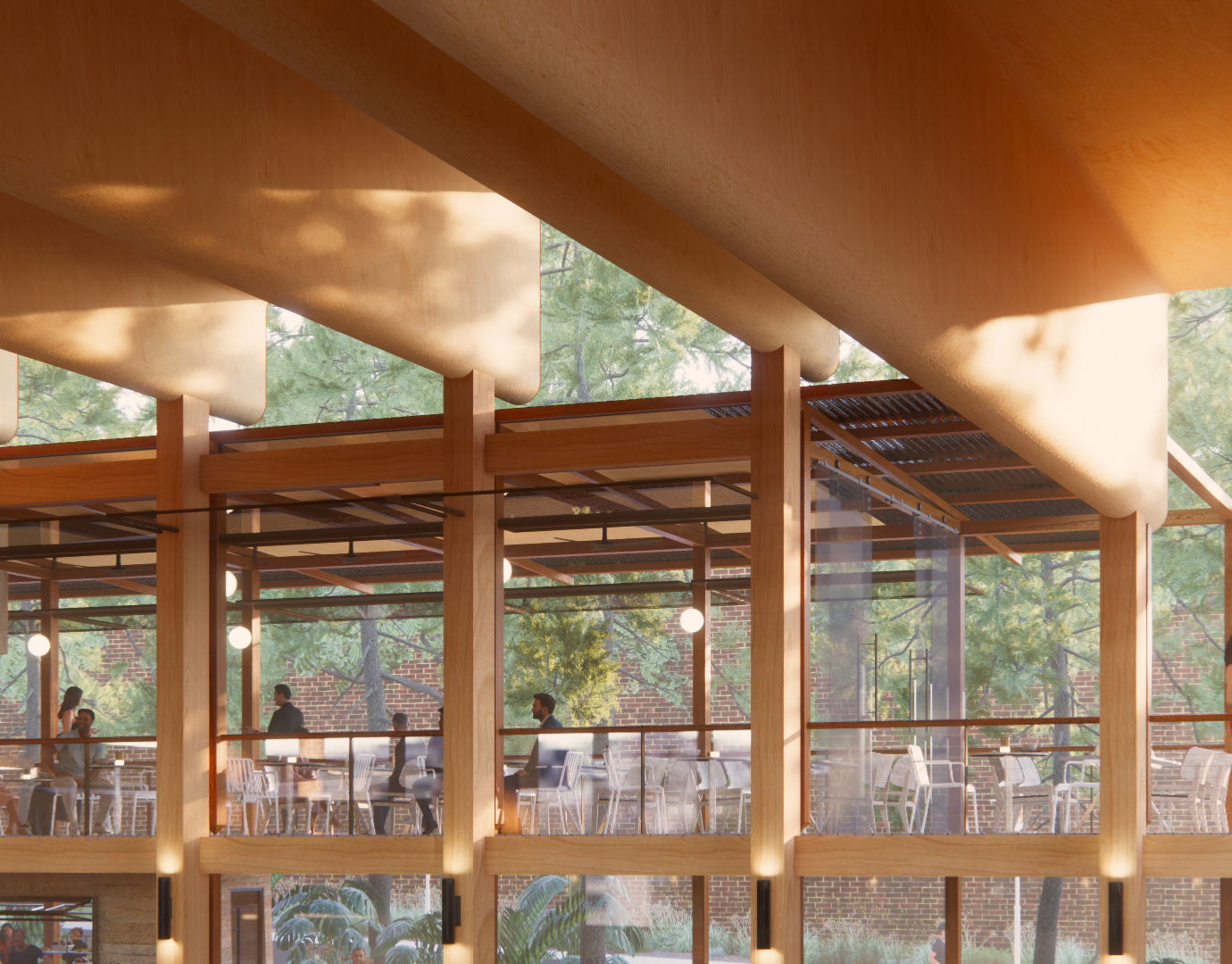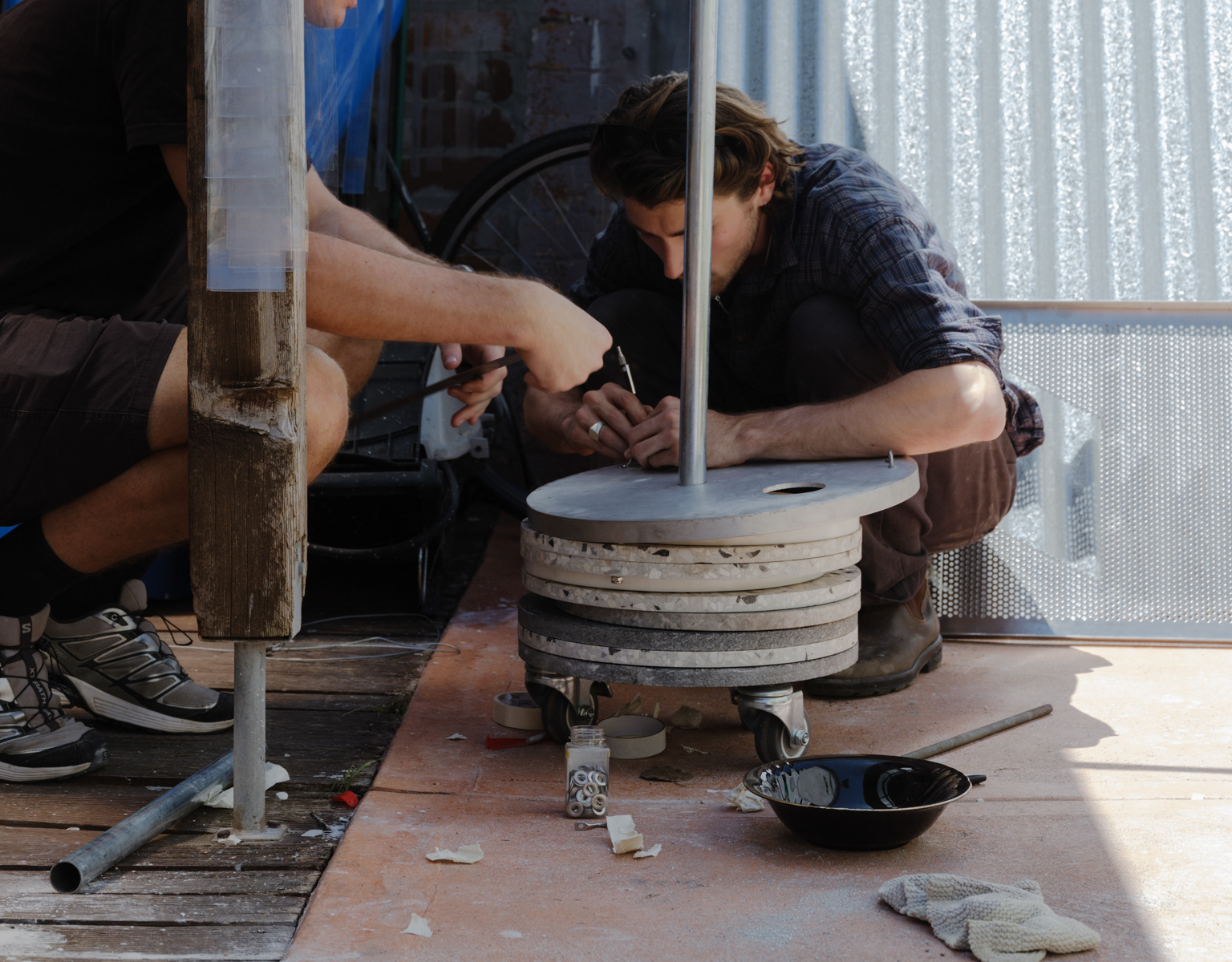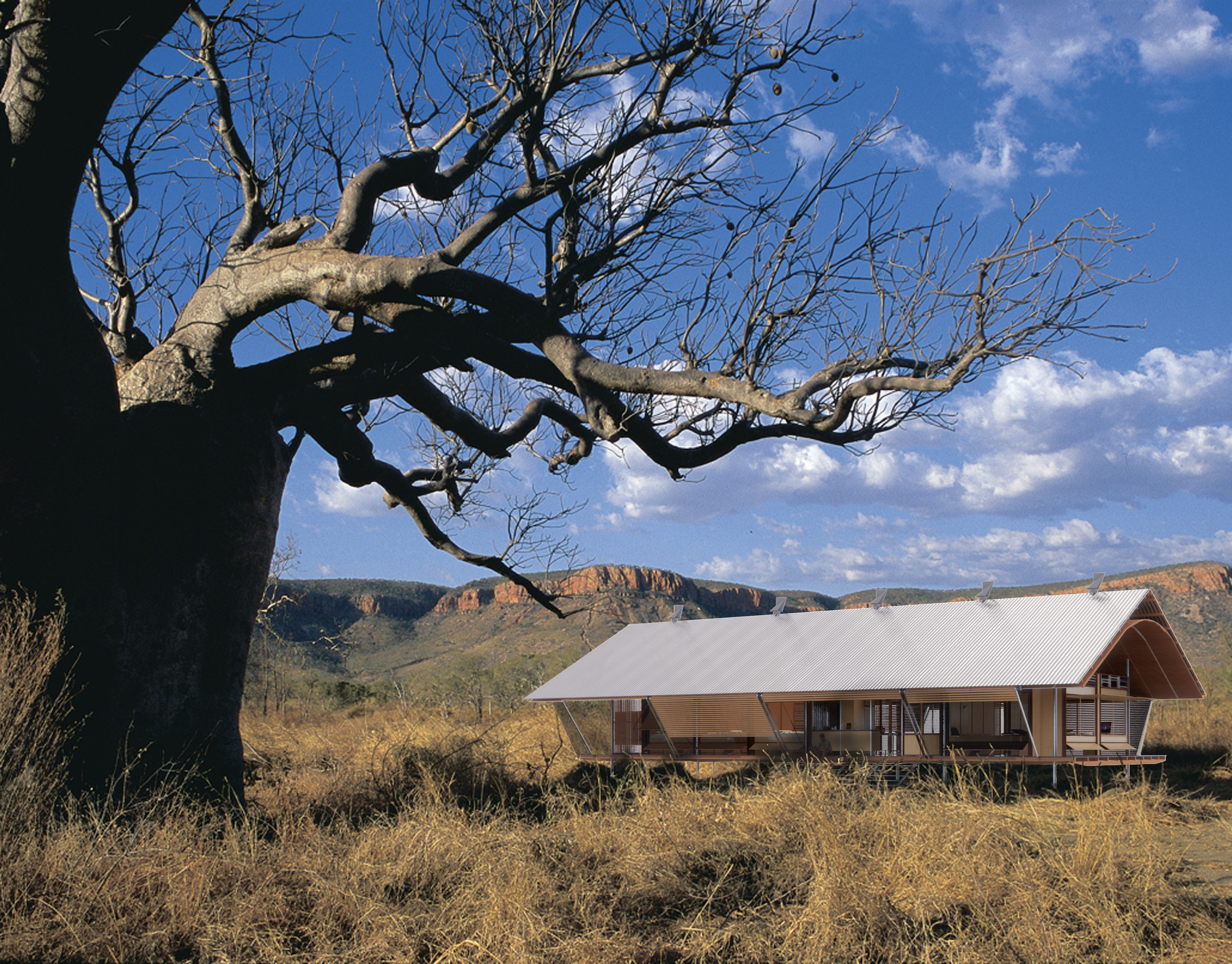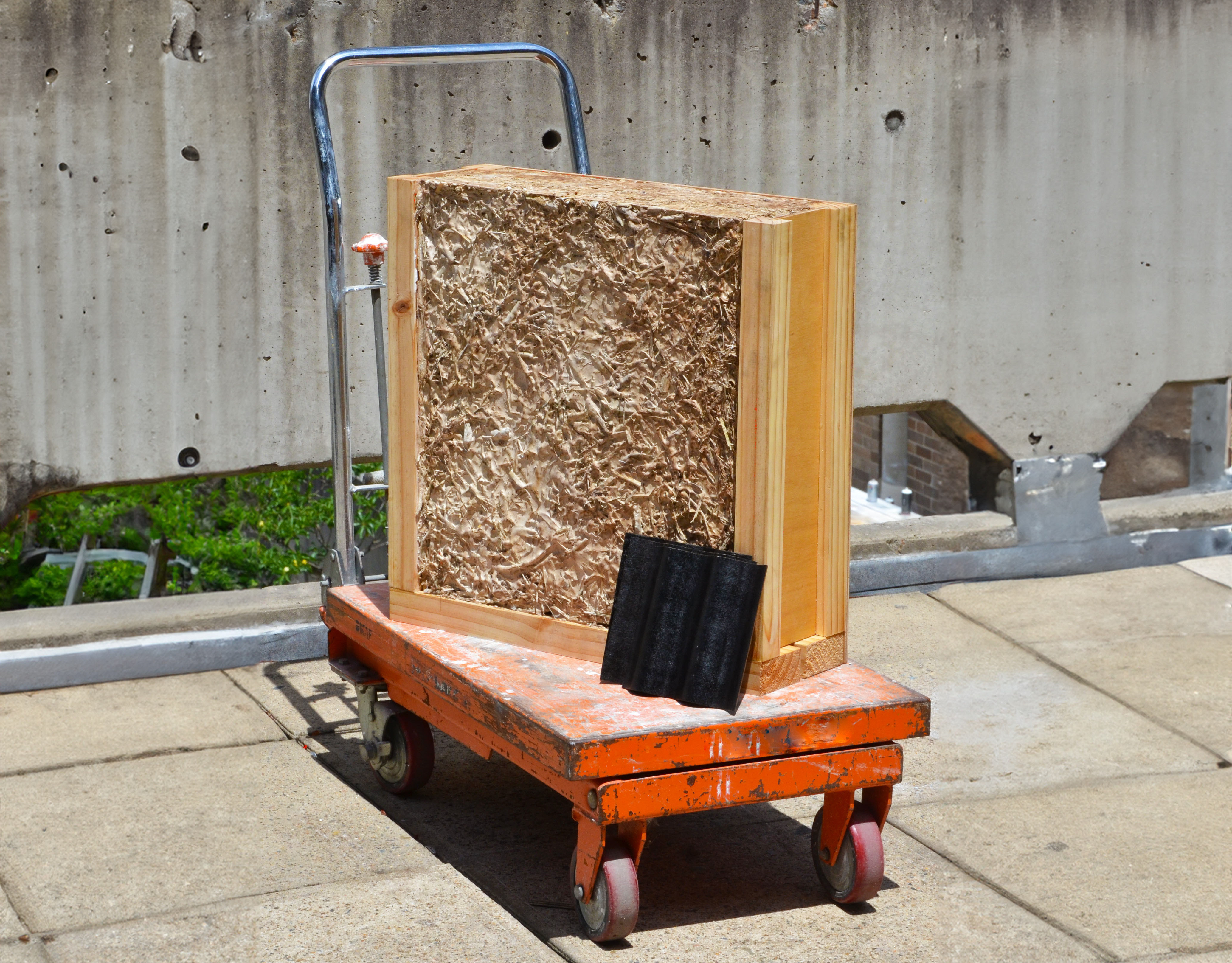Billard Leece Partnership Award - Master of Architecture - The University of Sydney School of Architecture Design and Plannining - 'A Post Carbon Pedagogy' - November 2024
“Keeping emissions on the path needed to limit the median expected increase to the recommended 2 degrees—and then delivering—would require a revolution.” Martin Wolf
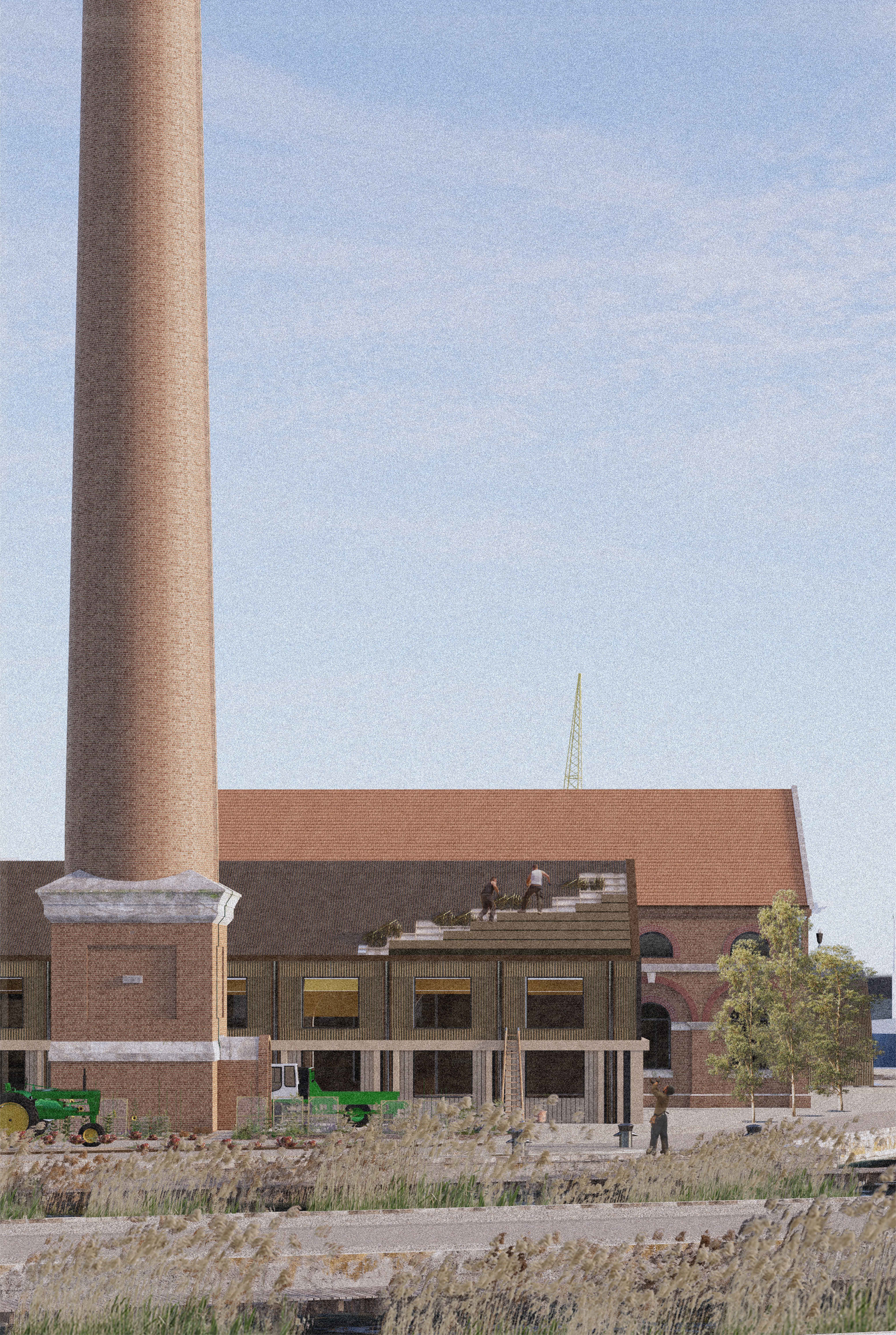
Render Image - Installation of reed thatch roof upon the proposed school's dining hall
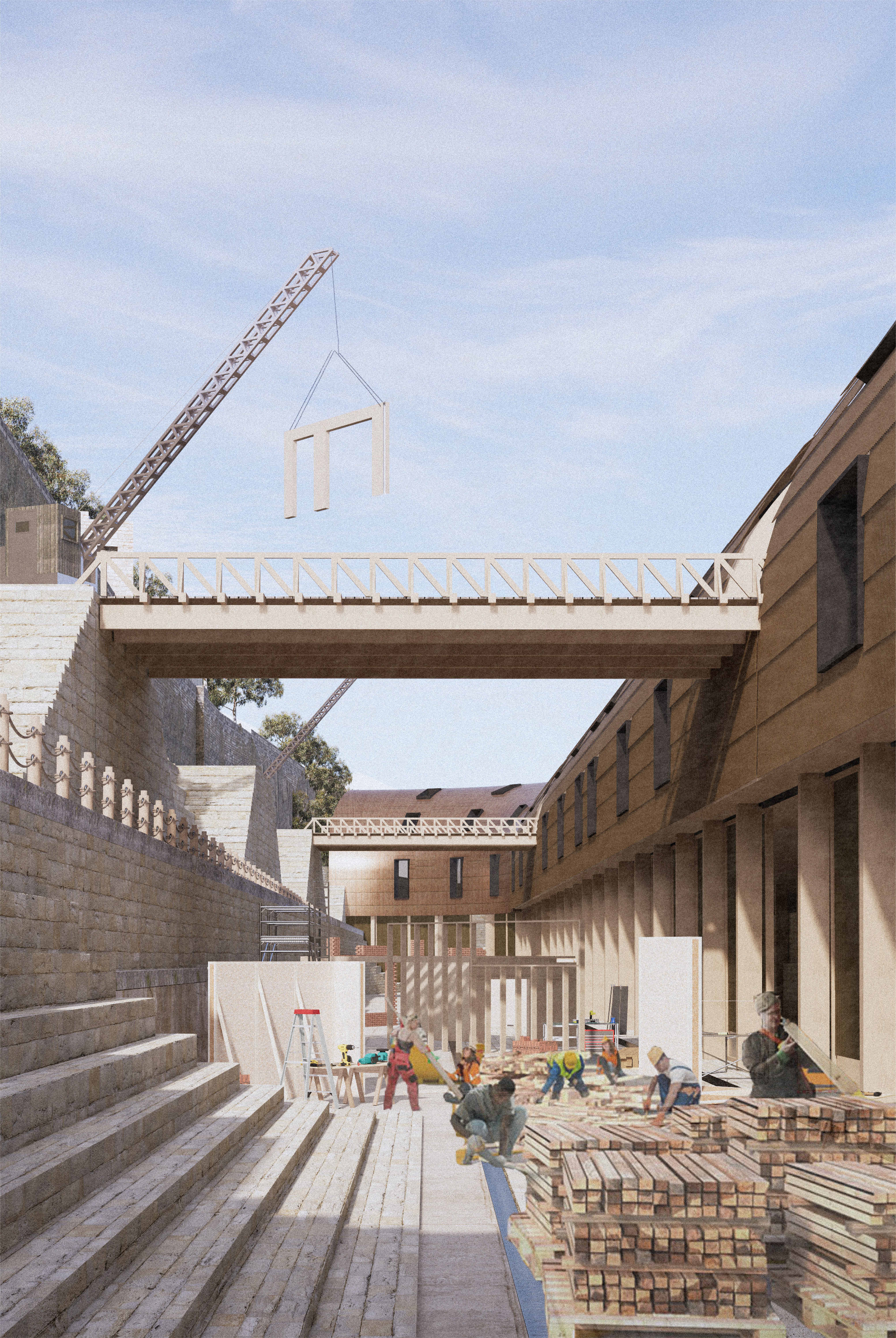
Render Image - Drydock School Workshop
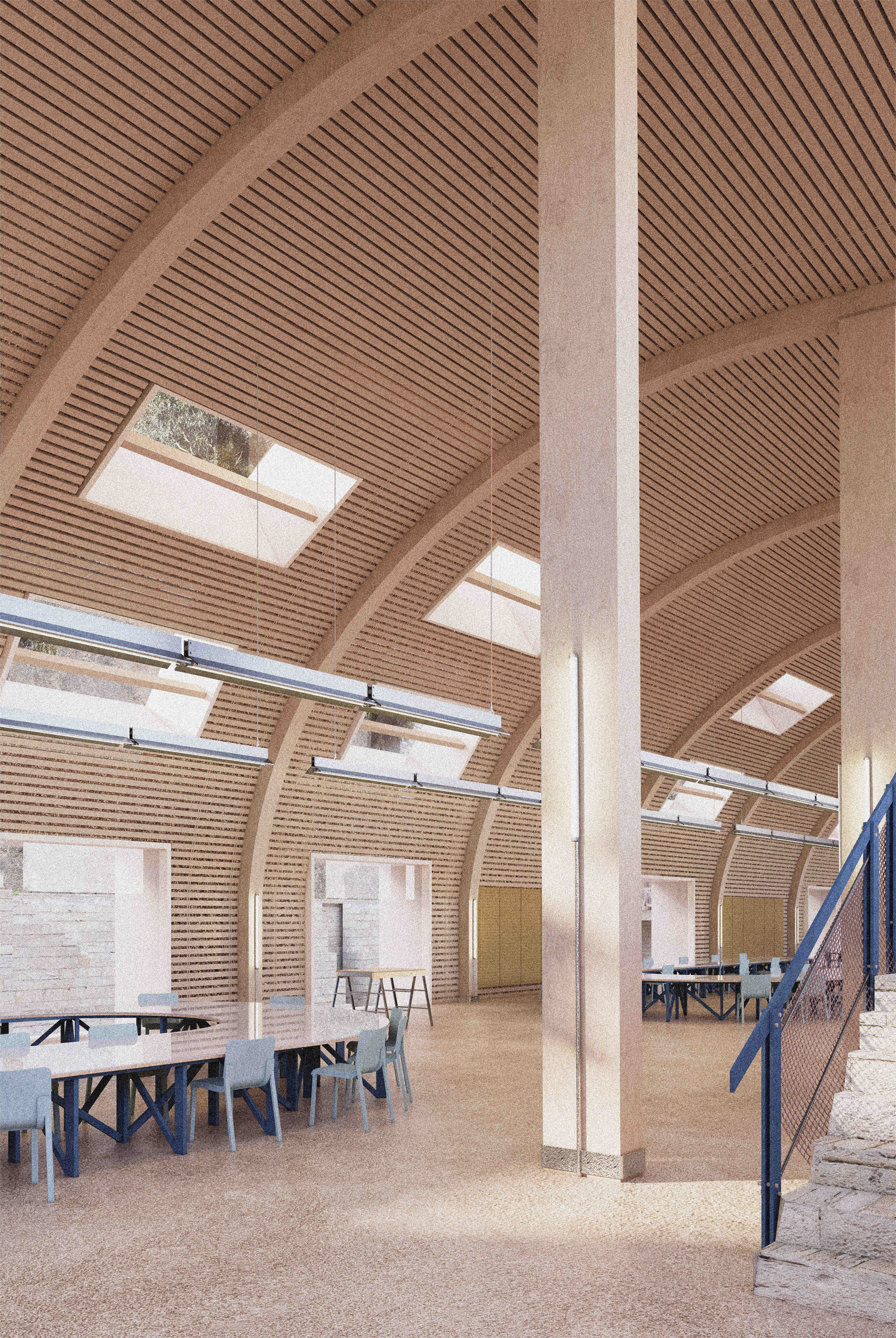
Render Image - Drydock School Interior
Preface
This project envisions a future school of architecture on Cockatoo Island, one where bio-based construction, experimentation, and making are central to its pedagogy. Moving beyond extractive contemporary approaches, students engage in low-tech construction that prioritises material origins and life cycles, addressing the ecological necessity for a post-carbon future. Imagining the deindustrialised island as a productive landscape, fields of hemp, wheat, eucalyptus and reed become materials which inextricably tie the architecture to the agriculture from which it is grown. This immersive pedagogy encourages students to intimately understand and collaborate with the landscapes that sustain their materials, pointing to a radical, viable and urgent future of non-extractive, post-carbon design practices.
My Interest in a post-carbon architecture was born out of investigations in emerging low embodied-energy, plant-based materials and bringing these together with design to update our archaic construction culture. I question the scalability of these materials - imagining a whole pedagogy and island which forefronts an understanding of its impacts on architecture, the economy, on labour and perhaps most importantly on landscapes.
This pedagogy points to the school as a place for this unraveling - a place for inquiring and a place for students to really interrogate where things come from and what impact they have, questioning how we can navigate making decisions around what materials might be in buildings and what materials probably shouldn’t be.
The thesis ties this project’s architectural and ecological ambitions to broader conversations on climate strategy, with particular interest in their respective political, social and economic consequences. The oftentimes fraught debates between proponents of ‘degrowth’ and those who champion ‘eco-modernism’ as solutions to our climate emergency provide a productive line of inquiry through which this project’s position can be examined.
School
Manifesto
Our contemporary material culture is terrifyingly efficient. Reliant on destructive extraction, cheap petroleum based materials, opaque global supply chains, enormous production scales, and restrictive proprietary products, it ruthlessly transforms fuels into stuff into waste. Architects increasingly operate within this rigid culture as mere specifiers of high-tech, high-carbon proprietary products with untraceable origins. This stifling lack of agency impedes our ability to radically reposition and critically evaluate our prevailing culture of extraction and waste. Serious action is required to update the worn concept of sustainability and with naked survival at stake, hardline approaches become increasingly viable.
What is urgently needed is a shift towards a building culture which is devoted to radical sustainability. The architecture we produce has become a symbol of the fossil fuel age, perpetuated by both the profession and academia’s lagging priorities. To address this ignorance, we must look beyond the project and consider broader extractive processes, sites contexts, networks, and their implications. Approaching ecological breakdown, architects must renew their responsibility for present and future impacts of every design and construction decision.
Our current reliance on global logistical systems and economies, coupled with the manipulation of the biosphere, results in a rigid and fragile culture susceptible to instability. As these interrelated systems are exposed to stress, they buckle consecutively, a cascade failure. We need to shift our focus towards antifragility—designing systems that grow stronger from volatility and stress, especially as our changing climate increases the probability of high-risk events. This approach enriches our understanding of sustainability by encouraging the creation of buildings that not only withstand environmental and social crises but also adapt, improve, and thrive in response to them. Architecture must evolve from being ‘finished products’ to dynamic, adaptable systems capable of evolving with ever-changing contexts.
In contrast to blind faith in technology, we propose an architecture which is acutely aware of its reliance on extraction and one which shifts towards low-tech solutions. We must establish a direct relationship with materials, intimately understanding their origins, properties, and entire life cycles. Importantly, aesthetics should never override ethics. A renewed collusion between the ’ars’ of academia and the ‘scientia’ of manufacturing into a cohesive praxis holds the opportunity to renew the concept of sustainability. Transforming factory and workshop environments into supple laboratories for low-tech experimentation forms the basis of a new material culture, one where architects remain in direct contact, and may even grow, the stuff they use to build.
In these pedagogical settings, students and academics engage directly with on-site industrial processes, rethinking the roles of machinery and infrastructure to support creative exploration. This pedagogy is rooted in a deeper understanding of technology, leading to more informed and sustainable design practices. By working in proximity to skilled makers and processes, students bridge the gap between theoretical design and practical construction, addressing the dissonance that contributes to the placelessness of contemporary architecture and the climate crisis. Envisioning factories as flexible, adaptable environments that respond to natural cycles and integrating them with regional supply chains and ecological rhythms can enhance a more sustainable approach to production and design.
This repositioned culture begins to question how far an antifragile architecture needs to be pushed to withstand future crisis. Do we need to abandon just some contemporary comforts? Be mandated to grow our own food, and our own homes? Ban petrochemically derived materials outright? Or forgo Capitalism itself? An antifragile world may be one which humanity has seen before, one which is poorer, less productive and less democratic, but more than resilient. This school’s pedagogy explores what degree of antifragility is required to withstand our own self fabricated crises.
An overhaul of our global material culture is urgently needed, replaced with an emphasis on local resource economies and a deeper relationship with materials and construction processes. Embracing a resilient and antifragile architecture in the face of ecological breakdown requires this transformative shift. Let us propose a non-extractive architecture, perhaps unexpectedly, this may be one which is entirely founded upon its very processes of extraction, occupied with intimately knowing the whole lives of the stuff we build with.
Site Plan 1:600
Site Axonometric Diagram - detailing the relationship between the island's proposed productive landscape and the school
Section 1:150
Building Plan 1:150
Wall Section Details 1:50
Productive Landscape Planting Taxonomy
